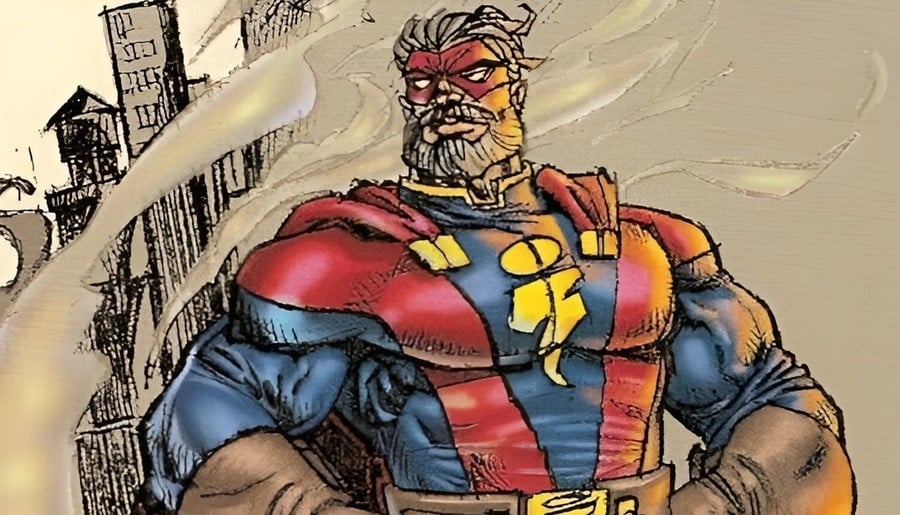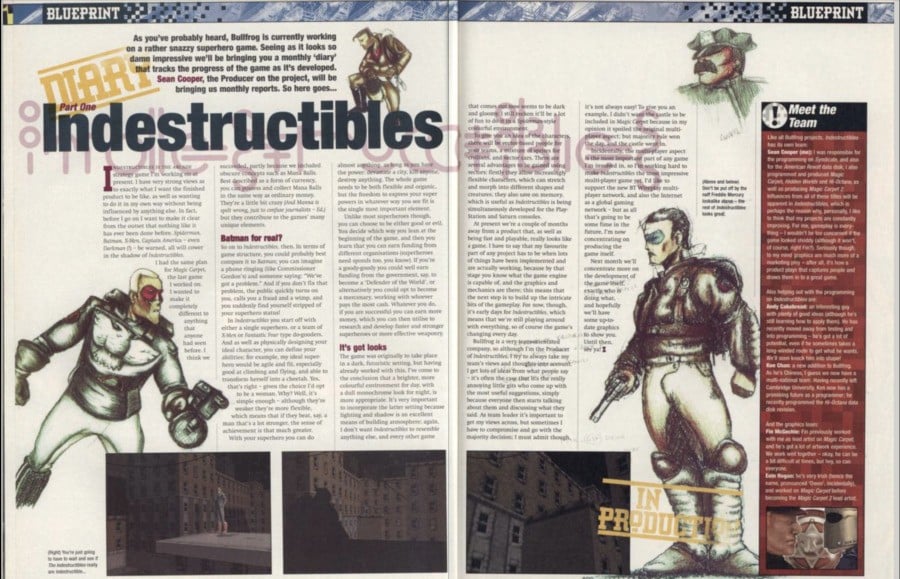
Throughout the late '80s and '90s, the British studio Bullfrog Productions established itself as one of the UK's most successful video game developers, going on to create a long line of classic titles that included the likes of Populous, Dungeon Keeper, Syndicate, Theme Park, and Magic Carpet, among many others.
As a result of this, whenever Bullfrog shared news that it was working on a new game, there would usually be a wave of excitement that went out among the studio's fans and the rest of the games industry, with people being curious to learn all they could about the latest title from the famous company.
Clearly recognising this demand for new information and wanting to generate further publicity, the studio head Peter Molyneux, as well as others within the company, made a concerted effort to the press about many of their in-development projects, offering regular updates about what they had in store for players in the future. And this also extends to a number of projects that never saw the light of day, including the 3D superhero game The Indestructibles.
The Indestructibles was an "arcade strategy" game that was initially announced to be in development in 1995 under the title "M.I.S.T. – My Incredible Superheroes Team". Over the years, it would end up being teased in several well-regarded publications, but was unfortunately cancelled several years later after running into a host of problems including legal threats from Marvel and a number of missteps from Electronic Arts that ended up forcing out some of its lead developers.
A couple of months ago, I spoke to Glenn Corpes, the co-creator of Populous and The Indestructibles project lead, to find out more about the company he formed after Bullfrog — Lost Toys — and in the process, he revealed some fascinating insights into The Indestructibles, which we thought might also be of interest to those who remember reading about the project back in the day.
The Indestructibles, according to a 1998 report from PC Gamer, started life as a tech demo created by the Bullfrog artist Fin McGechie, using an early version of Corpes's Dungeon Keeper engine and an editor that had been created for another Bullfrog game Hi-Octane. This demo saw players flying around a city in multiplayer, shooting each other with fireballs, with the multiplayer elements apparently being borrowed from Magic Carpet. It was originally unveiled in a report featured in Edge issue 22 in July 1995, and was going to let you design your own superheroes (using a technique called Skeletal Mapping), before letting you loose upon a large open-world city to protect the world "from invaders".
Then, later on, in a three-part dev diary published in PC Zone from February 1996 to April 1996, Sean Cooper, the producer of the project, revealed more information about the game, stating that players would not only be able to establish the appearance of their character, but would also be able to select their attributes and their alignment too (good vs. evil), with the game's structure said to be best compared to Batman with players getting a mission similar to how Commissioner Gordon calls the Batphone in the 1960s Batman TV series.
In addition to this, there was apparently a multiplayer element too, which would see players do battle against each other using their abilities, with Cooper interested in taking advantage of the BT Wireplay Multiplayer Network.

Initially intended to take place in a dark, futuristic city, it appears the setting, graphics, and tone shifted a few times during development. Cooper, for instance, wanted to go for "a brighter, more colourful environment for day" and a "dull monochrome for night", and also ended up teasing cartoon-animated introduction and link sequences. The graphics, meanwhile, were initially said to be a mix of vector-based people for your teams and sprites, and were said to take place in a 1920s/30s-style environment. However, this setting was later dropped, after the project was rebooted.
Reflecting on The Indestructibles in 2025, Corpes told me, "There was like 11 of us working on it and basically, it was working really well. Electronic Arts told us, 'This is great. This could be our entry into the Quake-like game market.' Jeremy Longley was the lead programmer. I was kind of project leader, but I wasn't the producer or the lead programmer."
"What happened was around the time Peter [Molyneux] left [in 1996], EA didn't really know what he did there, so they basically brought in a few people to to be above everything. And the whole reason I started doing The Indestructibles was because as head of R&D (research and development), I knew I was going to be interviewing someone that would become my boss, because he was just going to be inserted as technical director above me. So I said, 'I want to do my own game project'. It was kind of a stupid thing to do really, because I'd never done my own game project. I'd always been the engine guy on Populous, Powermonger, Populous II, Magic Carpet, and even Dungeon Keeper."
According to Corpes, the team continued working on the project, trying to turn it into something they could ship, and even at one point pursued the Marvel license, on the insistence of EA. However, Marvel's reaction was slightly more aggressive than the team expected, warning Bullfrog that if they created the game, they'd better make it so that none of their copyrighted IP could be recreated.
"We spoke to Marvel and Marvel basically just sent us a document with about 2,000 superheroes in it because it was a design-your-own-superhero game," said Corpes. "And said, 'Don't make it so that you can design any superheroes that are too much like these, otherwise we'll sue.' So the game got shelved."
He continued, "At one point, there was a very nice American guy that was a writer who'd been employed there who was going to help us figure out what they were going to do with it from a sort of narrative perspective. In the meantime, EA wanted a few of us to sort of tread water on the team. While we were doing that, they sacked two people working on the project without speaking to me or Jeremy. So we were all bloody angry and we left. So the original business partners for my company Lost Toys were me, Jeremy, and Darren Thomas (the lead artist on Theme Park World), and Les Edgar (who was Peter's original business partner at Bullfrog)."
After forming Lost Toys, the company went on to release the Marble Madness-inspired video game MoHo (otherwise known as Ball Breakers in North America) for the PlayStation, PC, and Sega Dreamcast, before then going on to develop Battle Engine Aquila, an ambitious mech-based shooter that was originally released in 2003 for PS2, Xbox, and PC.
The Indestructibles, on the other hand, has become little more than a memory, with some footage, illustrations, and artwork being pretty much all that is left of the project now.
